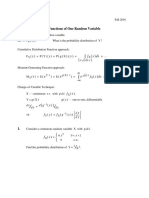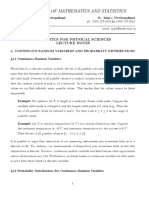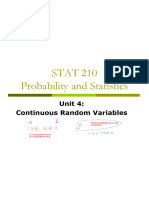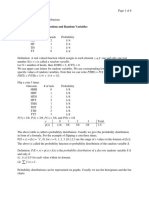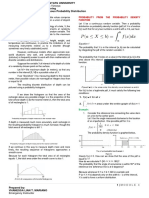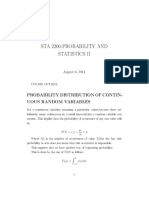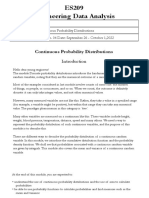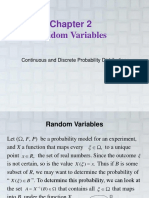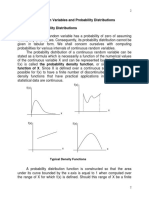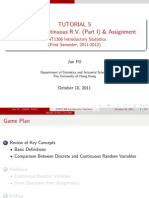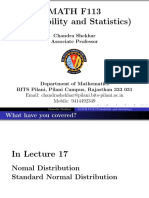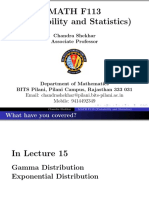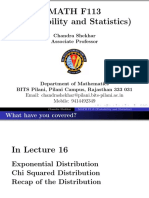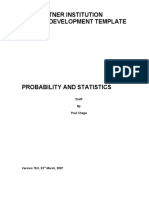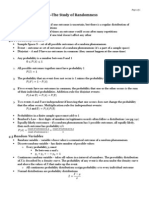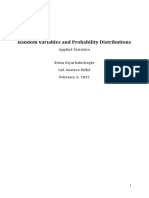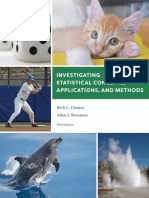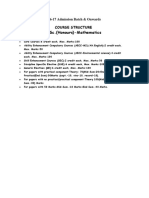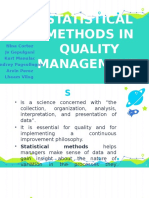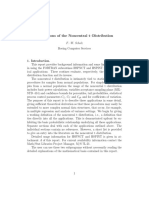0% found this document useful (0 votes)
91 views36 pagesLecture12 PDF
This document discusses a probability and statistics course taught by Chandra Shekhar. It covers topics like discrete and continuous distributions, including binomial approximation, Poisson approximation, and defining continuous random variables and probability density functions. Examples are provided to demonstrate calculating probabilities using continuous densities and cumulative distribution functions.
Uploaded by
Apoorav DhingraCopyright
© © All Rights Reserved
We take content rights seriously. If you suspect this is your content, claim it here.
Available Formats
Download as PDF, TXT or read online on Scribd
0% found this document useful (0 votes)
91 views36 pagesLecture12 PDF
This document discusses a probability and statistics course taught by Chandra Shekhar. It covers topics like discrete and continuous distributions, including binomial approximation, Poisson approximation, and defining continuous random variables and probability density functions. Examples are provided to demonstrate calculating probabilities using continuous densities and cumulative distribution functions.
Uploaded by
Apoorav DhingraCopyright
© © All Rights Reserved
We take content rights seriously. If you suspect this is your content, claim it here.
Available Formats
Download as PDF, TXT or read online on Scribd
/ 36



